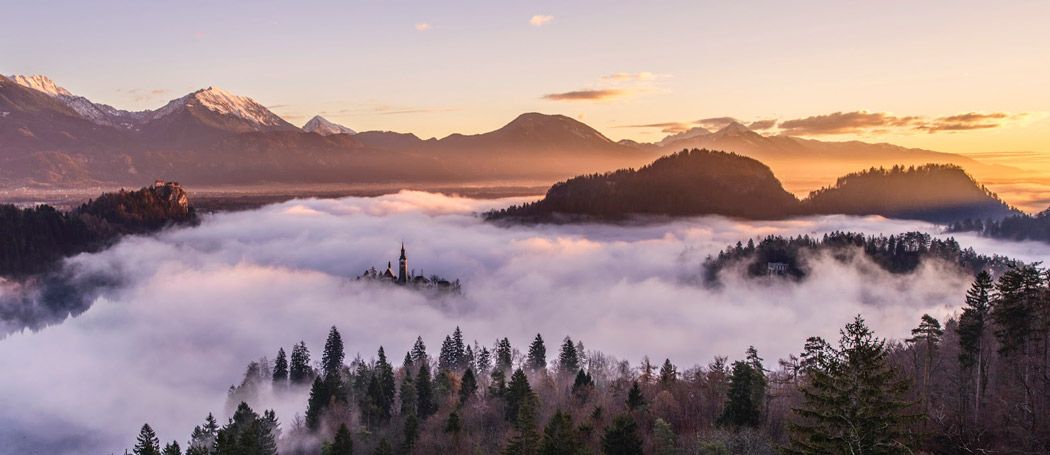Wildfires and Watersheds: The Forest as a Water Pump
Brace yourselves. We are on the cusp of another fire season, and its year-to-year intensity is only increasing. Like many environmental issues, the increase in wildland fires has no quick fix. It depends not just on firefighters and foresters, but whole communities to take part in preventative and reactive actions.
It’s no surprise that moisture and rainfall act as great deterrents to wildfires. Business owners and private citizens may be surprised to know the impact that they themselves can have on their local climate. But first, let’s look at how trees do the same.
Trees and the Water Cycle
When rain falls onto a forest, only about 25% of the stormwater reaches the ground. The remaining 75% of the water lands on and stays in the canopy. That’s because for every square yard of forest, there are 27 square yards of leaves or needles on which to capture moisture. Most of this then evaporates (1).
That evaporation allows for clouds to move inland. Without trees, rainfall would be limited to within 400 miles of any given coastline. There would be no mechanism for it to get further inland. Because of this process, Little Rock, AR gets more annual rainfall than Boston, MA. The rainfall that actually reaches the ground becomes stormwater and possibly groundwater.
Far and away the most efficient place to store water is in the soil; that’s why infiltration basins are so prevalent as a stormwater Best Management Practice (BMP). There are several methods by which groundwater naturally gets recharged, and many of these ways have been significantly disrupted by human activities. When stormwater makes its way to the oceans of the world, one of our main goals is to slow its progress. The longer the retention time of the water in the watershed, the greater the opportunity for it to leach into the ground or become part of vegetation. Likewise, fast-moving and rapidly accumulating stormwater leads to flooding and a dryer landscape.
Focal Point: The American West
Now let’s look at California, a land notorious for savage wildfires. When the city of Los Angeles was designed, one of their infrastructure goals was to move water through the city and to the sea as fast as possible. Remember the scene from Terminator 2: Judgement Day where John Conner on a dirtbike is chased by a vengeful, truck-driving T-1000 down a massive concrete channel forming a long section of the LA River?
Re-watching the scene from a stormwater perspective, we’ll notice no opportunities whatsoever for any soil infiltration for water running down the channel. There’s no vegetation to retain moisture, filter pollutants, or capture litter. Runoff hurtles downstream as fast as a motorcycle. We at AQUALIS can make sure our clients have healthily infiltrating and responsibly draining properties, but it takes a community effort to ensure that municipalities are taking watershed protection just as seriously.
Another major issue is the disappearance of wetlands--that part of paradise that was paved for the parking lot. This comes from expanding cities and from centuries of hunting beavers. There were so many beavers all across America as it was colonized that their pelts were used as currency--since then, tens of millions have been removed from habitats across North America.
Imagine a river and all its tributaries. In one case, it may have hundreds of beaver dams at different places, each one a sponge creating small and distributed places for rainwater to integrate into the soil. On the other hand, there are one or two massive, man-made dams that create one mega-lake that all the river’s tributaries rush water down to. Removing millions of beavers over many decades has caused most of these areas to dry out, and it goes without saying that swamps are highly resistant to fires.
Heat Wave: The Forest as an Air Conditioner
The main contributing factors to forest fires are heat, dryness, and wind. Trees, especially pine trees, thrive in environments rather cooler than those seen in recent summers. The shade created by the canopy keeps the understory cool and allows for streams and springs to flourish.
More than that, these conifer forests release chemicals called terpenes, which significantly boost the creation of clouds and the reflection of sunlight by attracting water vapor. That’s right: forests can and do create their own climates to optimize their growth and limit the intensity of fires. This is especially stark in comparison to cities, thanks to the urban heat island effect: spiking temperatures around extended impermeable surfaces.
That said, this tree air conditioning also works in towns and cities, where each one of us can make an impact. For instance, a neighborhood with well-shaded streets can be up to 6–10° F cooler than neighborhoods without street trees. This tempers the heat island and reduces energy needs. Additionally, shady parking lots will keep cars and trucks cooler, reducing emissions from fuel tanks and engines, and helping reduce the heat-island effect in communities.
Smoke on the Water
If we want to reduce the frequency and intensity of wildland fires, the process will take many years and community-wide participation. Increasing the amount of green spaces and water infiltration is a great start, while maximizing the amount of tree-covered land with protected rivers and wetlands is a worthy end-goal.
So now’s your chance to increase your region’s resilience to fire. You don’t even need to have a pet beaver. Just plant trees, be active in your town’s stormwater and foresting policies, be supportive of your local firefighters, and ensure that the rainfall on your property is being managed appropriately. The best place to start is with a consultation from AQUALIS. Reach out to us and together, we will make Smokey the Bear proud.
In-Text Citations:
(1) The Hidden Life of Trees, Peter Wohlleben, 2015
